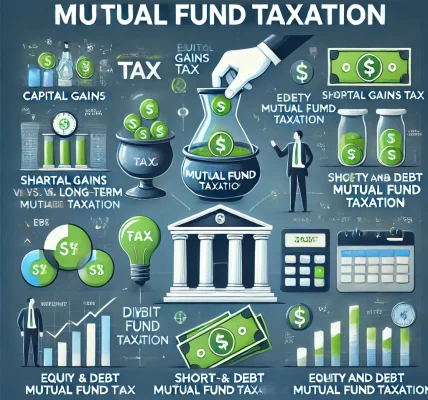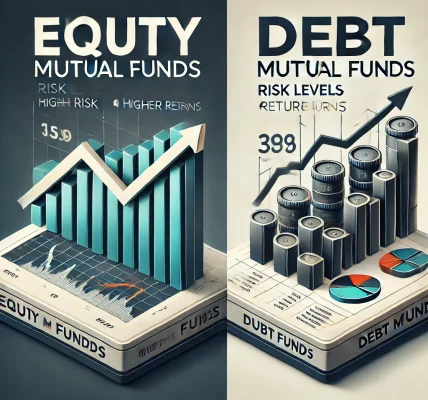Introduction
Investing in mutual funds is an excellent way to build wealth over time. However, before choosing a fund, it is crucial to understand a key factor that affects your returns – the expense ratio. The expense ratio represents the cost of managing the mutual fund and can significantly impact your investment growth.
This article explores what the expense ratio is, how it works, and why it matters to investors. By the end, you will have a clear understanding of how to evaluate mutual funds effectively and optimize your investment decisions.
1. Understanding the Expense Ratio
The expense ratio is the annual fee charged by a mutual fund to cover its operating costs. It is expressed as a percentage of the total assets under management (AUM).
Key Components of the Expense Ratio:
- Fund Management Fees – The cost of professional fund managers who research and make investment decisions.
- Administrative Costs – Expenses related to record-keeping, legal compliance, and investor services.
- Marketing & Distribution Fees – The cost of advertising and commissions paid to distributors.
- Other Miscellaneous Expenses – Costs associated with audits, legal compliance, and custodial services.
For example, if a mutual fund has an expense ratio of 1.5%, it means you pay $1.50 annually for every $100 invested.
2. How Expense Ratios Affect Your Returns
A higher expense ratio reduces your overall returns, making it essential to compare this fee when selecting a mutual fund.
Example Calculation:
- Scenario 1: A mutual fund with a 1.5% expense ratio generates 10% annual returns. After deducting expenses, your effective return is 8.5%.
- Scenario 2: A similar fund with a 0.5% expense ratio also earns 10% returns. Your final return is 9.5%.
The lower the expense ratio, the higher the net returns over time. This is especially important for long-term investments, where compounding plays a major role in wealth accumulation.
3. Types of Mutual Funds and Their Expense Ratios
Different mutual fund categories have varying expense ratios due to their structure and management style.
1. Actively Managed Funds
- These funds have higher expense ratios as fund managers actively select stocks/bonds.
- Typical expense ratio: 1% – 2.5%
- Example: Actively managed equity mutual funds.
2. Passively Managed Funds (Index Funds & ETFs)
- These funds track an index and require minimal management, leading to lower costs.
- Typical expense ratio: 0.05% – 1%
- Example: Nifty 50 Index Funds, S&P 500 ETFs.
3. Debt Mutual Funds
- These funds invest in fixed-income instruments and usually have lower expense ratios than equity funds.
- Typical expense ratio: 0.5% – 1.5%
4. Hybrid Mutual Funds
- These funds combine equity and debt investments and have moderate expense ratios.
- Typical expense ratio: 1% – 2%
4. How to Find and Compare Expense Ratios
Mutual fund companies are required to disclose their expense ratios. You can find this information in:
- Fund Fact Sheets – Available on the fund house’s website.
- SEBI (for India) or SEC (for the US) Disclosures – Regulatory bodies provide transparency on expense ratios.
- Mutual Fund Research Platforms – Websites like Morningstar, Value Research, and Moneycontrol offer comparisons.
Benchmarking Expense Ratios:
- Compare with similar funds in the category.
- Look at historical trends to see if the expense ratio is stable or increasing.
- Check if the fund’s performance justifies the cost.
5. Is a Lower Expense Ratio Always Better?
While a lower expense ratio generally means higher net returns, it is not the only factor to consider.
When a Low Expense Ratio is Good:
✅ Index funds and ETFs – They have lower costs and still deliver solid returns. ✅ Debt mutual funds – Lower expenses help maximize fixed-income gains.
When a High Expense Ratio is Justified:
✅ Actively managed funds with superior past performance and skilled fund managers. ✅ Funds providing specialized strategies, such as thematic or international funds.
If a mutual fund has a higher expense ratio, it should compensate with consistent superior performance over time.
6. Strategies to Minimize Costs and Maximize Returns
- Opt for Direct Plans Instead of Regular Plans
- Direct mutual fund plans have lower expense ratios than regular plans (no distributor commissions).
- Can save 0.5% – 1.5% annually, boosting long-term returns.
- Choose Index Funds for Passive Investing
- They offer lower costs with market-linked performance.
- Monitor Expense Ratios Periodically
- Some funds increase their expense ratio over time.
- Invest in No-Load Mutual Funds
- Avoid funds with high front-end or back-end loads (sales charges).
- Consider Expense Ratio Along with Other Metrics
- Don’t select a fund only based on low expenses—assess returns, risk, and fund manager expertise too.
7. Conclusion: Why the Expense Ratio Matters
The expense ratio is a critical factor in mutual fund investing. It directly affects your investment returns, especially over the long term. By understanding and comparing expense ratios, investors can make informed decisions to maximize returns while keeping costs in check.
✅ Lower expense ratios help in compounding wealth over time. ✅ Actively managed funds should justify their higher costs with better performance. ✅ Always compare funds within the same category before making investment decisions.
By being mindful of expenses and choosing cost-effective mutual funds, investors can achieve better financial growth with minimal drag on their investments.
Disclaimer: This article is for informational purposes only and should not be considered financial advice. Please consult a professional financial advisor before making investment decisions.




